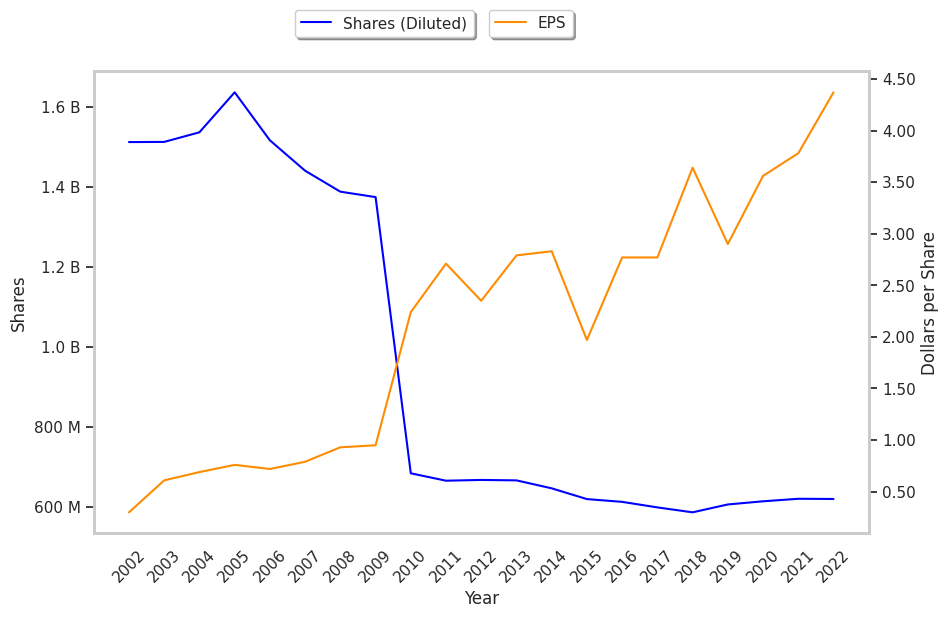General Mills shares fell by -1.2% during the day's afternoon session, and are now trading at a price of $62.65. Is it time to buy the dip? To better answer that question, it's essential to check if the market is valuing the company's shares fairly in terms of its earnings and equity levels.
A Very Low P/E Ratio but Trades Above Its Graham Number:
General Mills, Inc. manufactures and markets branded consumer foods worldwide. The company belongs to the Consumer Staples sector, which has an average price to earnings (P/E) ratio of 24.36 and an average price to book (P/B) ratio of 4.29. In contrast, General Mills has a trailing 12 month P/E ratio of 15.3 and a P/B ratio of 3.55.
General Mills's PEG ratio is 1.85, which shows that the stock is probably overvalued in terms of its estimated growth. For reference, a PEG ratio near or below 1 is a potential signal that a company is undervalued.
The Company May Be Profitable, but Its Balance Sheet Is Highly Leveraged:
| 2018 | 2019 | 2020 | 2021 | 2022 | 2023 | |
|---|---|---|---|---|---|---|
| Revenue (MM) | $15,740 | $16,865 | $17,627 | $18,127 | $18,993 | $20,094 |
| Gross Margins | 34% | 34% | 35% | 36% | 34% | 33% |
| Operating Margins | 15% | 15% | 17% | 17% | 18% | 17% |
| Net Margins | 14% | 11% | 13% | 13% | 14% | 13% |
| Net Income (MM) | $2,163 | $1,786 | $2,211 | $2,346 | $2,735 | $2,610 |
| Net Interest Expense (MM) | $374 | $522 | $466 | $420 | $380 | $382 |
| Depreciation & Amort. (MM) | $619 | $620 | $595 | $601 | $570 | $547 |
| Earnings Per Share | $3.64 | $2.9 | $3.56 | $3.78 | $4.42 | $4.3100000000000005 |
| Diluted Shares (MM) | 586 | 605 | 613 | 619 | 613 | 601 |
| Free Cash Flow (MM) | $2,218 | $2,269 | $3,215 | $2,452 | $2,747 | $2,089 |
| Capital Expenditures (MM) | $623 | $538 | $461 | $531 | $569 | $690 |
| Net Current Assets (MM) | -$18,623 | -$17,408 | -$16,459 | -$15,503 | -$15,617 | -$15,697 |
| Long Term Debt (MM) | $12,669 | $11,625 | $10,929 | $9,787 | $9,135 | $10,524 |
| Net Debt / EBITDA | 4.87 | 4.4 | 3.04 | 3.29 | 2.8 | 2.96 |
General Mills has growing revenues and a flat capital expenditure trend and wider gross margins than its peer group. Additionally, the company's financial statements display decent operating margins with a stable trend and positive EPS growth. However, the firm has a highly leveraged balance sheet. Finally, we note that General Mills has irregular cash flows.



